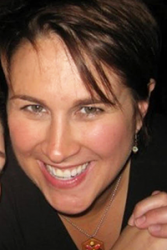Ahna Skop
Home Department: Genetics
Location: 425-G Henry Mall
Education: BS, Biology, Syracuse University
PhD, Cell and Molecular Biology, University of Wisconsin–Madison
Postdoctoral Fellowship, University of California-Berkeley
Lab website: http://skoplab.weebly.com/
Mechanisms that underlie cell division and using scientific art to engage the public



